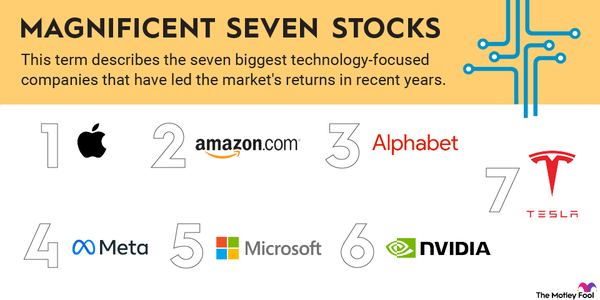New York Life Insurance is the largest life insurance company in the U.S., boasting a 6.86% market share in 2023, according to the National Association of Insurance Commissioners (NAIC). Last year, it raked in more than $13.2 billion in direct premiums.
But if you're wondering how to invest in New York Life Insurance, the answer isn't exactly simple. New York Life Insurance is a mutual insurance company, which means it's owned by its policyholders, not shareholders. It's not possible to buy New York Life Insurance stock. To become an investor in New York Life Insurance, you'd need to buy one of its life insurance policies or annuities.

Publicly traded?
Is New York Life Insurance publicly traded?
No, New York Life Insurance isn't publicly traded. That means you can't buy New York Life Insurance stock through a brokerage account.
New York Life Insurance is what's known as a mutual insurance company, meaning it's privately held and owned by its policyholders. By contrast, a stock insurance company is owned by its shareholders. As we'll discuss in greater detail later, some (but not all) policyholders can earn a piece of New York Life's profit if its board of directors declares a dividend.
Advocates of the mutual insurance structure argue that it allows companies to focus on policyholder needs rather than the short-term whims of shareholders. The drawback, though, is that mutual insurance companies can't issue shares to raise capital, which can hinder growth.
Note that while you can't buy New York Life Insurance stock, the company has a number of financial products that let you invest in the stock market. These include retirement accounts, 529 plans, mutual funds, and exchange-traded funds (ETFs). But to actually invest in the company -- as in, to get a slice of its profits -- you'll need to be a policyholder.
When will it IPO?
When will New York Life Insurance IPO?
If you're waiting for New York Life Insurance to launch an initial public offering (IPO), don't hold your breath. Although several major life insurance companies, like Prudential (PRU -0.25%) and MetLife (MET -0.45%), became publicly traded companies in the late 1990s and early 2000s through a process known as demutualization, New York Life resisted the trend.
In its 2023 investment report, New York Life Insurance attributed its ability to "not only weather times of crisis but emerge from them stronger" to its having been a mutual insurance company since its founding in 1845.
How to buy
How to buy New York Life Insurance stock
Because it's a mutual insurance company rather than a stock insurance company, you can't buy New York Life Insurance shares. However, there are many publicly traded insurance stocks you can add to your portfolio to cash in on the industry. Here are three to consider:
1. Berkshire Hathaway
Warren Buffett's Berkshire Hathaway (BRK.A -0.34%)(BRK.B -0.56%) is a conglomerate holding company, not an insurance company, but it has significant exposure to the insurance industry. It owns several insurance businesses, including GEICO, Gen Re, National Indemnity Co., and Berkshire Hathaway Reinsurance Group, and holds positions in several publicly traded insurance stocks.
2. Prudential
Prudential was the fourth-largest life insurance company by market share in 2023 and is a leading provider of retirement and investment services. The company grew its pre-tax adjusted operating income in the first quarter of 2024 by 16% over Q1 2023, reaping the benefits of higher interest rates.
Prudential continues to increase its group and individual life insurance sales and has seen strong growth in its pension risk transfer business. The company has also axed several unprofitable segments of its business, such as Assurance IQ, an insurance tech start-up it bought for $2.35 billion in 2019. Prudential is a solid dividend stock with an annual yield of 4.6% as of mid-June 2024 and a 16-year streak of annual dividend increases.
3. Lemonade
Conservative value investors often favor insurance stocks, but if you're willing to make a risky foray into insurance stocks, you could consider a position in Lemonade (LMND -0.18%). The company has been a leader in using artificial intelligence (AI) in insurance. In fact, it claims to have set a world record for the fastest insurance claim processed when its AI chatbot processed a claim in two seconds in 2023.
Lemonade isn't profitable, but its losses in the first quarter of 2024 shrank to $47 million compared to $66 million in Q1 2023. It's also improved its gross margins and increased average premium per customer by 8% year over year in the first quarter of 2024. As of this writing, the stock is down roughly 80% from the all-time highs it reached in 2021.
If you want to invest in the three companies listed above or any other publicly traded company, follow the following four steps to buy stocks.
Step 1: Open a brokerage account
You can open a brokerage account in just a few minutes online by providing a few pieces of information, like your name, contact info, date of birth, and Social Security number. Most major brokerages have commission-free trades, and many don't have a minimum opening deposit. So, it's easy to start investing, even if you don't have much money.
Step 2: Figure out your budget
In addition to deciding what to invest in, you'll need to determine how much you want to invest. Even if you're bullish on insurance stocks, putting all your investment money into a single industry is risky.
Consider starting with a well-diversified investment, like an S&P 500 index fund, which gives you exposure to 500 companies across all 12 stock market sectors. If you want additional insurance exposure, you can allocate part of your investing budget toward insurance stocks.

Step 3: Do your research
Make sure you understand the risks and rewards associated with insurance stocks before you invest. For example, insurance stocks tend to be good for investors seeking stability and dividend income. Insurance also tends to be a recession-resistant business.
However, a single unexpected event, like a major hurricane or pandemic, can put a huge dent in an insurer's profits. Low interest rates also tend to spell bad news for the industry because insurers make money by investing a significant chunk of premiums in fixed-income products.
Step 4: Place an order
Once you've decided which stocks to buy, you'll need to place an order by entering the stock's ticker into your brokerage's order page. You'll also need to indicate the number of shares you want to buy. Alternatively, if your brokerage allows you to buy fractional shares, you can specify a dollar amount.
You'll also need to choose between a market order or limit order. A market order tells your broker to execute the trade right away, while a limit order tells them to make the trade only when it reaches a specific price.
Profitability
Is New York Life Insurance profitable?
Yes, New York Life Insurance is profitable. The company reported operating earnings of $3.1 billion in 2023. In 2024, about $2.2 billion of its profit was distributed to policyholders through dividends.
New York Life also received the highest financial strength ratings from all four major ratings agencies in 2023. A high rating indicates that an insurer is in a strong position to pay future claims.
Should I invest?
Should I invest in New York Life Insurance?
Investing directly in New York Life Insurance by purchasing shares is impossible. You'll need to become a policyholder -- specifically, you'll need a whole life insurance policy or one of New York Life Insurance's new mutual income annuities. If the board of directors elects to distribute a portion of the company's profits to policyholders, you'll earn a dividend if you own one of these instruments.
But the bigger question is whether you need either of these products.
Whole life insurance is significantly more expensive than term life insurance, which doesn't offer the opportunity to earn interest or dividends. A savings component called cash value tends to accumulate slowly, particularly in the policy's early years. When a dividend is declared, you can use it to boost your cash value or death benefit, take it in cash, or use it to offset your premiums.
But whole life insurance is typically far more expensive than a term policy. You may be better off buying a term policy from New York Life (or any other highly rated insurer) and investing the savings in stocks through your 401(k) or individual retirement account (IRA).
Annuities also aren't for everyone. They may be appropriate for risk-averse investors worried about outliving their money. However, they're extremely complex financial products and carry high fees.
Something to keep in mind is that the IRS considers life insurance dividends an overpayment of premiums rather than a profit. You won't pay taxes on most life insurance dividends, which may sound like a good thing -- but you got the dividend because you paid higher premiums in the first place.
Agents typically earn high commissions when they sell you permanent life insurance or an annuity. Before buying either of these products from New York Life Insurance or any other company, consider hiring a fee-only financial planner to help determine whether the product is suitable for you. A fee-only planner doesn't earn a commission and is paid based on their services, so you can feel more confident about their recommendations.
ETF options
ETFs with New York Life Insurance exposure
Since you can't buy New York Life Insurance stock, you won't find ETFs or mutual funds with exposure to the company. You can find several funds with exposure to other insurance stocks, though:
- Vanguard Value ETF (VTV -0.12%): The fund tracks a market-cap-weighted index of about 340 large-cap stocks deemed value stocks based on metrics like price-to-book ratio, price-to-sales ratio, and return on assets. About 20% of its holdings are in the financial sector, which encompasses insurance stocks. The ETF's expense ratio is 0.35%, which means $3.50 of a $1,000 investment goes toward fees.
- iShares U.S. Financials ETF (IYF 0.26%): If you want an ETF focused specifically on financial stocks, check out the iShares U.S. Financials ETF. The fund invests in an index of about 140 financial stocks, with approximately 22% of its assets invested in insurance stocks. Its expense ratio is 0.40%, which translates to $4 in fees on a $1,000 investment.
- SPDR S&P Insurance ETF (KIE 0.78%): This ETF is an option if you're looking for a fund that invests exclusively in insurance companies. The fund has 48 holdings and about $715 million in assets under management, making it the smallest ETF on this list. Its expense ratio is 0.35%, meaning $3.50 of a $1,000 investment is put toward fees.
Related investing topics
The bottom line on investing in New York Life Insurance
New York Life Insurance gets top marks for financial strength, one of the most important things you should look for in an insurer. But since it's not a publicly traded company, you can't buy New York Life Insurance stock. Investing in New York Life Insurance requires buying whole life insurance or a mutual income annuity. You'll get part of the profit if the board issues a dividend.
Though New York Life Insurance has a solid track record of paying dividends to policyholders, dividends are never guaranteed. Moreover, if you don't need a permanent life insurance policy or an annuity, the prospect of a dividend certainly isn't reason enough to buy one of these costly products.
FAQ
Investing in New York Life Insurance FAQ
Does New York Life Insurance do investments?
New York Life Insurance offers several investment products, including retirement accounts, 529 plans, mutual funds, and ETFs. Some of its life insurance policies and annuities can also be used as investment vehicles.
Does New York Life have stock?
No, New York Life Insurance doesn't issue stock. It's a mutual insurance company, meaning it's owned by policyholders instead of shareholders.
Can I invest money in New York Life?
If you want to invest money in the company itself (not simply in an investment account or fund it offers), you'll need a whole life policy or a mutual income annuity. You can receive some of the company's profit as a dividend if approved by its board of directors.
Is New York Life a publicly traded company?
No, New York Life isn't a publicly traded company and is unlikely to become one anytime soon. It's been a mutual insurance company owned by policyholders since its founding in 1845.











































































































































































































































































